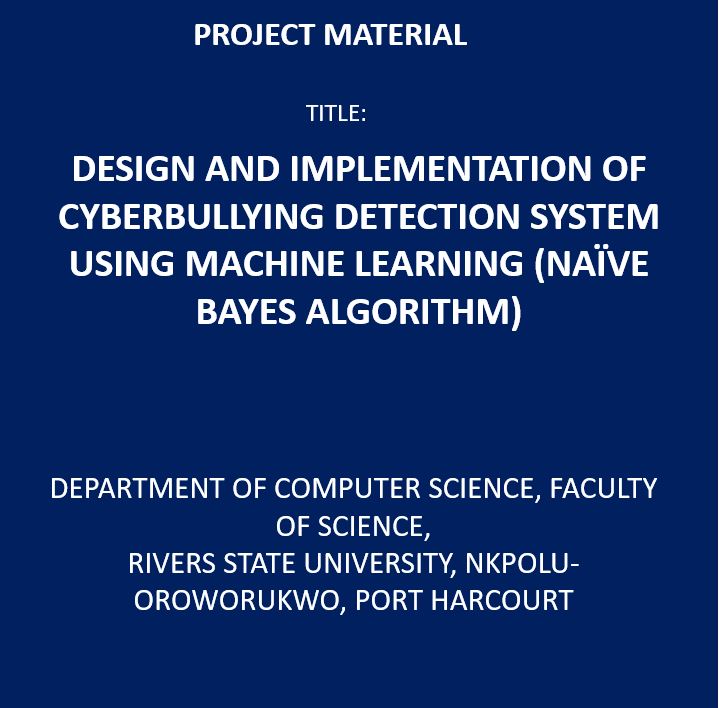No products in the cart.
Design and Implementation of Cyber bullying Detection System Using Machine Learning (Naïve Bayes Algorithm)
₦10,150.00
DESIGN AND IMPLEMENTATION OF CYBER BULLYING DETECTION SYSTEM USING MACHINE LEARNING (NAÏVE BAYES ALGORIT
- PROJECT YEAR: 2022
- NUMBER OF PAGES: 143
- FILE TYPE: DOC
- DEGREE: BACHELOR
- INSTITUTE: DEPARTMENT OF COMPUTER SCIENCE, FACULTY OF SCIENCE, RIVERS STATE UNIVERSITY, NKPOLU-OROWORUKWO, PORT HARCOURT
ABSTRACT
As cyberbullying often has an implicit and subtle nature, its detection is not a trivial task. We show promising initial results for the identification of cyberbullying. Cyberbullying has become a severe problem in modern societies. This research proposed a cyber-bully detection model Furthermore, various methods of text classification based on machine learning were investigated. The experiments were conducted on a global dataset The aim of this research is to develop a Cyber Bullying Detection System using naïve Bayes. The application is designed using mainly Java technology, it is designed as a web application so it can run on browsers, as a result, the user interfaces are developed using web technologies such as HTML5, CSS3 and JavaScript. The application logic is developed using Java Beans and Java Servlet. The application is designed using the Model-View-Controller approach (MVC). The data persistent layer is maintained using the MySQL relational database. The dataset totalling 2000 entries was gotten from Kaggle dataset repository. The dataset was split into a test set (1000 entries) and a train set (1000). The train set was used to train the support vector machine algorithm to produce a classification model. The test set was used to test the model trained to obtain the accuracy, F1 and confusion matrix values. The precision obtained for the single class naïve bayes method was about 80%, representing a significant improvement compared to similar works reference.

